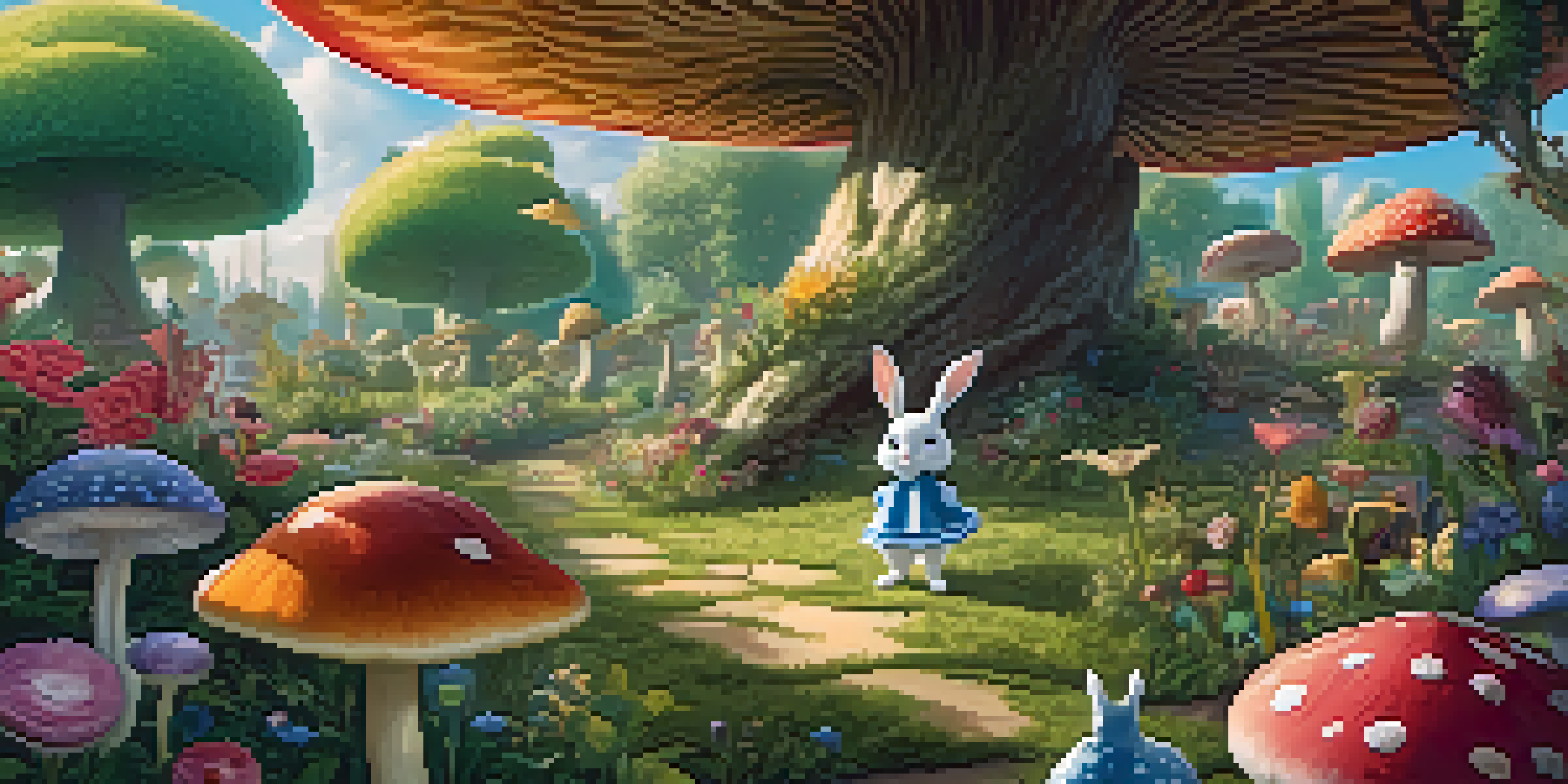From Alice in Wonderland to Psychedelia: A Literary Journey

The Whimsical World of Alice in Wonderland
Lewis Carroll's 'Alice in Wonderland' transports readers to a fantastical realm where logic is turned upside down. Alice's adventures through the looking glass challenge the norms of reality, inviting readers to question their perceptions. The curious characters, from the Cheshire Cat to the Mad Hatter, embody the unpredictable nature of the mind, setting the stage for explorations of consciousness. This whimsical world serves as a playground for imagination, sparking creativity that resonates through generations.
The Rise of Psychedelic Literature
Emerging in the 1960s, psychedelic literature was heavily influenced by the cultural shifts and the growing interest in altered states of consciousness. Authors like Aldous Huxley in 'The Doors of Perception' began to explore themes of perception and reality, echoing the nonsensical world of Carroll. Psychedelic literature often embraces a surreal style, mirroring the experience of mind-altering substances. This genre invites readers to explore the boundaries of reality, much like Alice did in her adventures.
Alice and Psychedelic Literature Unite
Both 'Alice in Wonderland' and psychedelic literature invite readers to explore disorientation and challenge perceptions of reality.
Parallels Between Alice and Psychedelic Narratives
Both 'Alice in Wonderland' and psychedelic literature share a sense of disorientation, inviting readers to lose themselves in a maze of thoughts and experiences. Just as Alice encounters bizarre characters and nonsensical scenarios, psychedelic literature often presents fragmented narratives that challenge traditional storytelling. This sense of confusion can lead to profound revelations, reflecting the transformative journeys both Alice and the reader undergo. The exploration of identity and reality remains a common thread binding these two worlds together.
The Influence of Surrealism
Surrealism, an art movement that blossomed in the early 20th century, heavily influenced both Carroll's work and the psychedelic movement. Surrealists sought to tap into the unconscious mind, often using dreamlike imagery that resonates with Alice’s dreamlike adventures. The blending of reality and fantasy in surrealism mirrors the experiences found in psychedelic literature. This fusion encourages a departure from logical thought, allowing creativity to flow freely, reminiscent of Alice's journey through her peculiar world.
Surrealism's Influence on Storytelling
The surrealist movement significantly shaped both Carroll's whimsical narrative style and the mind-bending themes found in psychedelic literature.
Notable Psychedelic Authors Inspired by Alice
Several iconic authors have acknowledged the influence of 'Alice in Wonderland' on their psychedelic narratives. For instance, Thomas Pynchon’s 'Gravity’s Rainbow' and the works of Kurt Vonnegut often reflect a whimsical yet chaotic storytelling style reminiscent of Carroll's creations. Their stories weave complex themes with absurdity, inviting readers to embrace the unpredictable. This lineage from Alice to modern authors showcases the timeless impact of Carroll’s whimsical storytelling on contemporary literature.
Cultural Context: The 1960s and Beyond
The 1960s marked a cultural revolution, where literature, art, and music began to explore the depths of human consciousness. This era saw a rise in experimentation with psychedelics, leading to a resurgence of interest in fantastical narratives like 'Alice in Wonderland.' The merging of these cultural elements created a fertile ground for authors to experiment with style and substance, pushing boundaries. This context not only shapes the literature of the time but also redefines readers' understanding of reality.
Cultural Revolution Fuels Imagination
The cultural shifts of the 1960s revitalized interest in fantastical narratives, blending literature and psychedelia in innovative ways.
The Lasting Legacy of Wonderland
The influence of 'Alice in Wonderland' extends far beyond its pages, resonating in various forms of art and literature. It has inspired countless adaptations, from films to stage productions, continuing to captivate audiences. The themes of curiosity and exploration found in Alice’s journey pave the way for new interpretations and reflections in modern literature. This legacy reinforces the idea that literature can serve as a powerful vehicle for exploring the human experience, much like the psychedelic explorations that followed.
Conclusion: A Journey Through Imagination
From the whimsical landscapes of Carroll’s creation to the mind-bending narratives of the psychedelic era, the literary journey is one of exploration and discovery. Both realms challenge perceptions, encouraging readers to embrace the unknown and question reality. This intersection of imagination and consciousness invites us to reflect on our experiences and the world around us. Ultimately, the journey from 'Alice in Wonderland' to psychedelic literature is a testament to the power of storytelling in shaping our understanding of existence.